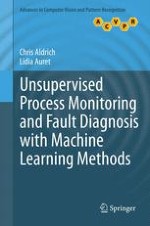2013 | OriginalPaper | Chapter
5. Tree-Based Methods
Authors : Chris Aldrich, Lidia Auret
Published in: Unsupervised Process Monitoring and Fault Diagnosis with Machine Learning Methods
Publisher: Springer London
Activate our intelligent search to find suitable subject content or patents.
Select sections of text to find matching patents with Artificial Intelligence. powered by
Select sections of text to find additional relevant content using AI-assisted search. powered by
